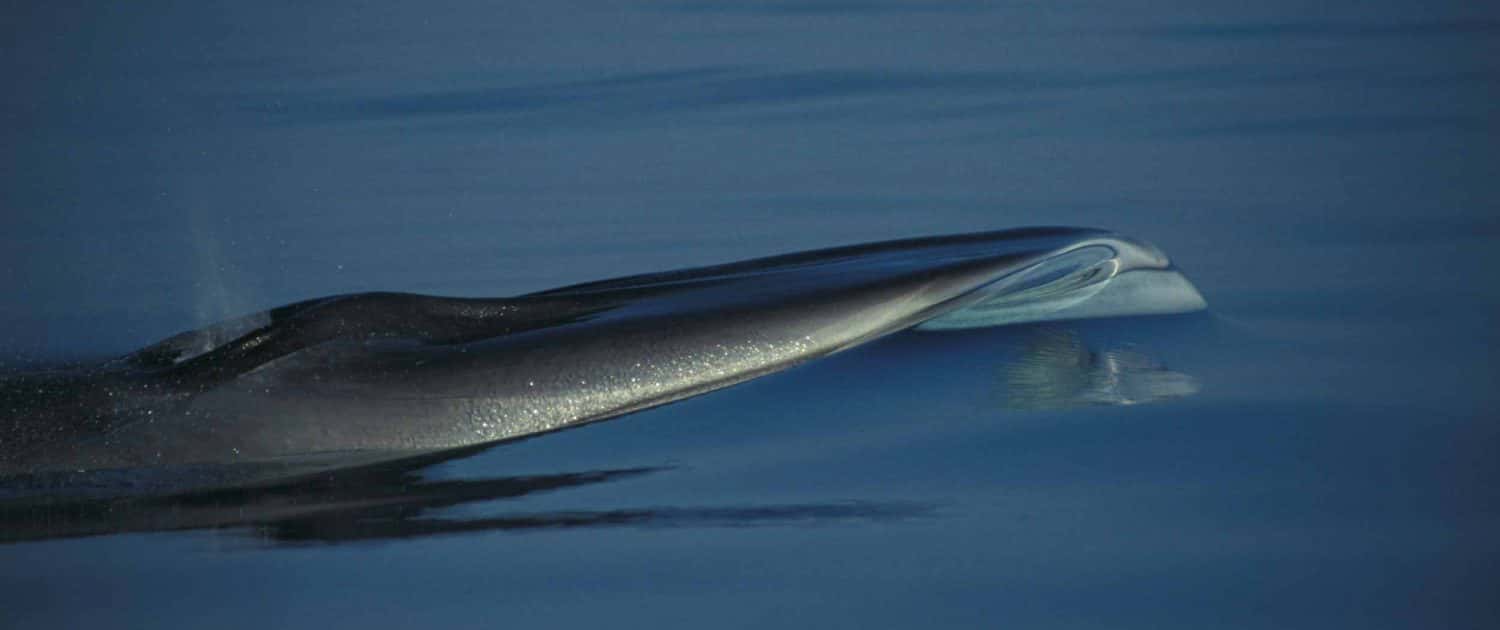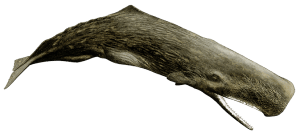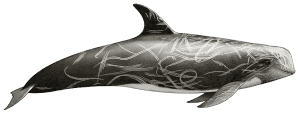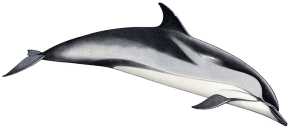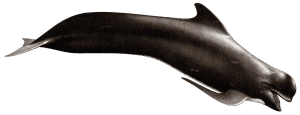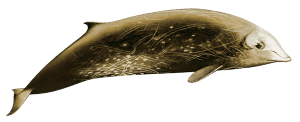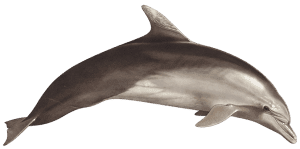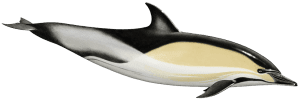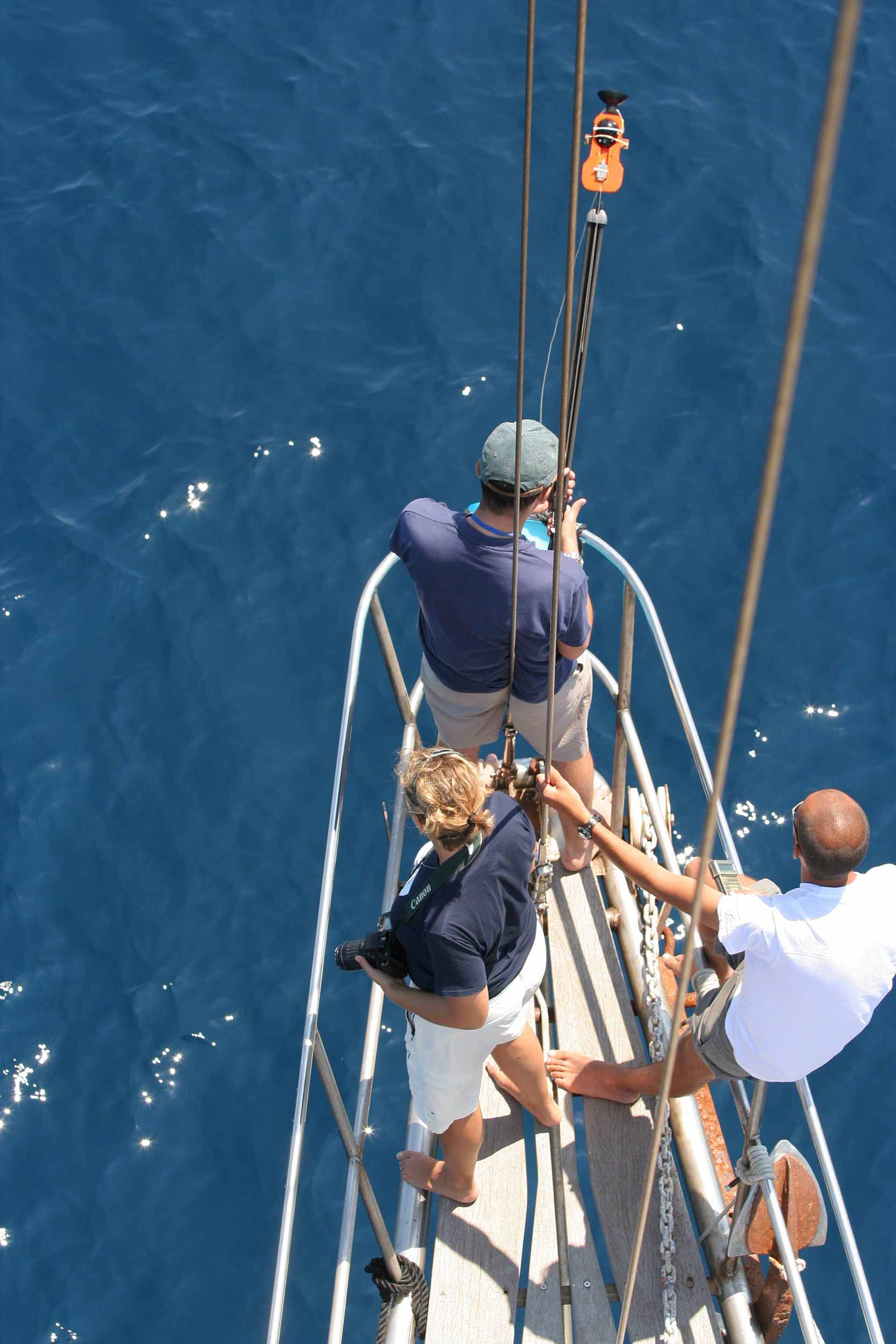Eight different species of whales and dolphins live in the Pelagos Sanctuary in the north-western Mediterranean
Striped dolphins, sperm whales, fin whales and bottlenose dolphins are the most common marine mammals
Sperm whale (Physeter macrocephalus)
The spermwhale is the largest of the toothed whales. It has a disproportionately large head and typically wrinkled skin. Individuals in the Sanctuary are almost exclusively males, females and calves living further south in the Mediterranean.
In our study area they are mostly sighted over the continental slope, i.e. 5-10 nautical miles off the coast. They perform very long dives, typically around 40 minutes, and can easily be acoustically detected by means of a hydrophone.
Fin whale (Balaenoptera physalus)
The fin whale is the only mysticete living in the Mediterranean, and the second largest species on the planet, right after the blue whale. Females are up to 24 meter long, males somewhat smaller.
In the Ligurian Sea they are almost exclusively sighted over deep waters. Being rich in krill (Meganyctiphanes norvegica), the Sanctuary is the only known fin whales’ summer feeding ground in the Mediterranean.
Risso’s Dolphin (Grampus griseus)
Risso’s dolphins are usually sighted a few miles from the coast in small to medium sized groups. They have slightly bulging foreheads and distinctive scratches and scars over their bodies. Therefore body colour tends to lighten with age. Lenght of adults is around 3,5 meters.
.
Striped dolphins (Stenella coeruleoalba)
Striped dolphins are the most commonly sighted cetaceans in the study area. Apparently they like bowriding in front of the boat and usually they travel in medium to large groups. Adults are about 2 meters long.
Long-finned pilot whales (Globicephala melas)
Pilot whales are large dolphins and are unmistakable because of their large rounded, black forehead and their low, broad-based dorsal fin. They typically live over high seas in large pods, but they are relatively rare in the study area.
Cuvier’s beaked whales (Ziphius cavirostris)
Also rather rare, and shy, Cuvier’s beaked whales are deep divers, up to 6 meters long. Individuals vary in colour, from white to reddish, often with scars over their body. They are usually spotted alone or in small groups.
Bottlenose dolphins (Tursiops truncatus)
Common bottlenose dolphins are somewhat larger than striped dolphins (3-4 meters), grey, with a robust head and body.
In the Sanctuary they are usually encountered close to the shore, both in Liguria and in Corsica.
Common dolphins (Delphinus delphis)
Short-beaked common dolphins were once actually common in the Mediterranean, but are now very rare. In the Sanctuary they are sometimes spotted together with striped dolphins. In respect to the latter they can be told apart by the distinctive hourglass pattern of white, grey and yellow on thier sides. Size is similar to striped dolphins’.

